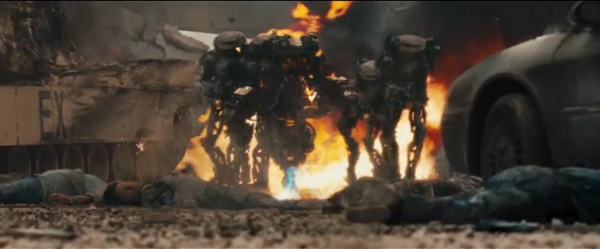'Battle: Los Angeles': The Story Behind a Sci-Fi Alien Invasion

The alien invasion film "Battle: Los Angeles," opening in theaters tomorrow (March 11), is clearly a work of fiction. But the marketing campaign behind the movie seems determined to ground it to reality by tying it to historical events — specifically, the World War II air raid false alarm that came to be known as the Battle of Los Angeles.
The real-life Battle of Los Angeles happened mere months after the Japanese surprise attack on Pearl Harbor. On the night of Feb. 24, 1942, unknown objects appeared in the skies over L.A. Thinking the nation was under attack, the United States Air Force responded with an hourlong anti-aircraft artillery barrage, causing building damage and killing three civilians (with three more dying shortly after due to heart attacks attributed to stress from the incident).
The current official explanation from Air Force representatives is that the incident was started by an errant weather balloon, but debate has lingered over the events of that night for decades. Unsurprisingly, UFO enthusiasts have frequently interpreted the strange presence in the sky as a sign of extraterrestrial contact. [10 Alien Encounters Debunked]
The battle took place just one day after the Bombardment of Ellwood, a Japanese attack on U.S. forces near the coast of Santa Barbara, Calif. The timing and geographic proximity have led to widespread belief that the initial military reaction at the Battle of Los Angeles was due primarily to nerves — an overreaction to something completely benign.
Playing off historical events
Sony Pictures has used the real-life Battle of Los Angeles as a powerful vehicle with which to promote the movie, with theatrical trailers, TV commercials and the film’s official website invoking the 1942 incident and similar events that reportedly took place in Buenos Aires, Seoul and London.
The movie's recent L.A. press junket also included a panel of four UFO pundits — including UFO Magazine’s Bill Birnes and former Air Force officer Robert Salas— who all believe that Earth has already been visited by alien life.
Breaking space news, the latest updates on rocket launches, skywatching events and more!
"We do think the public has a right to know," said Salas, who believes he witnessed an encounter with alien life at Montana’s Malmstrom Air Force Base in 1967. "Right now this secret is being held somewhere in government circles, and we think the public ought to be part of the conversation."
Choosing a faceless foe
Though these stories have clearly been important in marketing the film, the actual movie spends very little time discussing the invading aliens, or connecting their presence to any real-life reported sightings. As star Aaron Eckhart explained at a Los Angeles press event for the film, the aliens serve as an apolitical, uncontroversial enemy for U.S. soldiers to fight.
"I think they serve a wonderful purpose, in that they give us a great foe," Eckhart said. "In this day and age, who wants to see a war movie where you’re killing actual people?"
"Battle: Los Angeles" director Jonathan Liebsman agreed, saying that the tension of the movie is enhanced by the aliens being faceless villains.
"Creating a more frightening experience was the goal," Liebsman said.
Albert Ching is a staff writer for Newsarama.com, a sister site of SPACE.com.
Follow SPACE.com for the latest in space science and exploration news on Twitter @Spacedotcom and on Facebook.
Albert was a contributing freelance writer for Newsarama and Managing Editor Comic Book Resources covering comic, film, TV, and pop culture events for a multitude of sites and publications including The Atlantic, GamesRadar+, and DC Comics. He's currently a Marketing Manager for DC Comics in the areas of marketing and communication to fans via direct/mass-market retailers at one of the largest English-language publishers of comics and graphic novels in the world.
